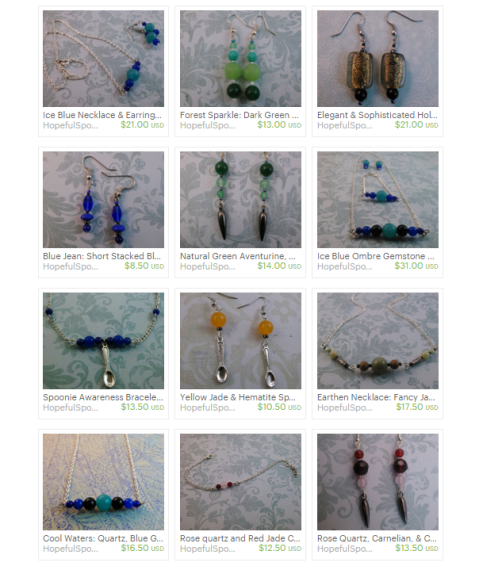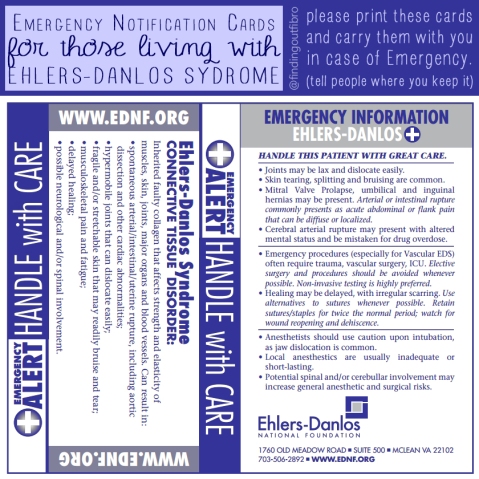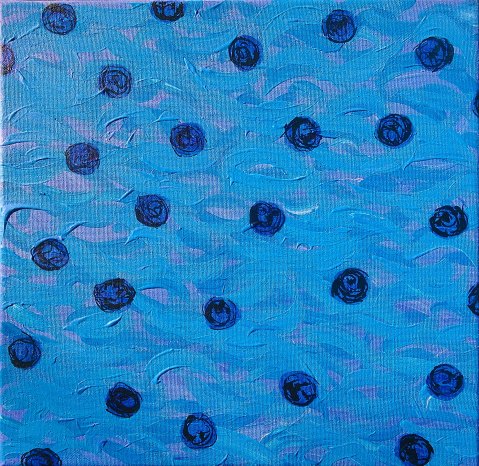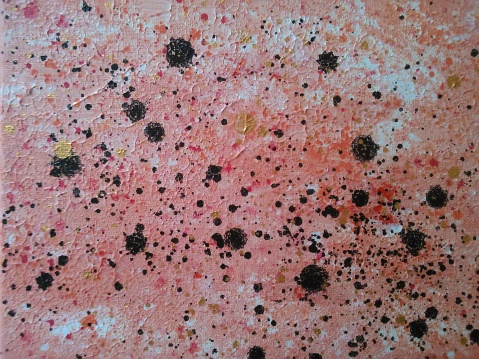Precious Diagnosis: What’s in a Name?

From my favorite blogger and one of my best friends in the whole world, this is a timely piece for rare disease month.
 Radiograph of my Sorrows by Natalia Drepina
Radiograph of my Sorrows by Natalia Drepina
Even if it’s a terrible diagnosis, you crave even the worst titles, just to have a name. Just to put a label on what your body is experiencing. You dream of a diagnosis for the madness eating away at your body and your life.
You want to scream when test after test comes back normal, appointment after appointment with no answers, and you wonder how much longer your body will hold out like this! Each frustrated physician and healer is at a loss and they know anything more they try could likely only make you worse. So one by one, they set you free into the river of uncertainty to face the un-named beasts in you alone– ALONE.
Instead of one diagnosis, you have a list of conditions that you don’t feel are your own. They are more like guesses your…
View original post 555 more words
Neurontin and Lyrica are a Death Sentence for New Brain Synapses
Exactly why I’m so glad to be off of it now!!! Lyrica is an awful, awful drug that made me gain so much weight and lose the ability to feel any pleasurable stimuli. My brain and my sense of self slowly floated further and further away. Now that I am successfully free, it’s like seeing in color again for the first time in years.
These blockbuster drugs were approved for use even though the FDA had no idea what they actually did in the brain. A shocking new study shows that they block the formation of new brain synapses, drastically reducing the potential for rejuvenating brain plasticity – meaning that these drugs will cause brain decline faster than any substance known to mankind…
The researchers in the above study try to downplay the serious nature of the drugs by saying “adult neurons don’t form many new synapses.” That is simply not true. The new science is showing that brain health during aging relies on the formation of new synapses…
There’s no reason to be so alarmist about Lyrica and Neurontin. Yes, patients need to be informed about the history of these drugs, especially since doctors don’t know how they work. In fact, one doctor who wanted to prescribe Lyrica for me…
View original post 409 more words
Gift Ideas for People with Chronic Illness and Disabilities

This is a truly comprehensive list of gifts that spoonies will love to receive for the holidays! My beautiful friend, ABodyofHope put together a really amazing Spoonie Gift Guide, I’m so impressed!
I’m not just saying that because she featured my Etsy shop, The Hopeful Spoon (hopefulspoon.etsy.com) in her clever list, either!

If you are shopping for a loved one with a chronic illness, long-term illness, or disability, you may feel unsure of their needs, wants and special daily circumstances. Most of these gifts are either for comfort or meant to inspire, yet are still appropriate for someone who is mostly confined to their home or uses a walking aid, if applicable. Here are several gift ideas along with advice to help you shop (from someone who has personal experience with chronic illness, and great friends and family.) *Starred shops are run by disabled sellers who work extra-hard to support themselves.
 Internet Subscriptions allow your chronic friend to watch movies and television any time instantly from anywhere. Especially on those bad days when doing nothing but resting is the best and only option, distraction therapy like settling in to great movies and television is a wonderful gift they will certainly thank you…
Internet Subscriptions allow your chronic friend to watch movies and television any time instantly from anywhere. Especially on those bad days when doing nothing but resting is the best and only option, distraction therapy like settling in to great movies and television is a wonderful gift they will certainly thank you…
View original post 1,551 more words
A Spoonie Poem for All With Chronic Illness
My friend Misty is a Lyme Disease fighter, and she’s been fighting it for more than fifteen years, though she was diagnosed within the last two years, about the same time I found out I had fibro. We grew up in the same small little town towards the Oregon coast, and since I never went to high school with her, being sent off to private school instead, we didn’t have an opportunity to speak for many years. Thanks to the magic of facebook, we are back in touch. I’ve learned a lot from Misty.
In addition to being a totally courageous and fabulous warrior kindred spirit, she is also a mom to two little ones. She just had her second, against all odds, against everything she’s been told by doctors about her prognosis. She keeps searching for a cure on her own, she keeps educating others about tick borne diseases, and she keeps building her family. She fights LD with a holistic, carefully researched approach. That kind of honesty and determination deserve some love. Though I wish she had her own blog to record her thoughts because her writing is incredibly strong and poignant, you can understand why a mom to a little boy and a new baby girl, a mom who suffers from advanced Lyme Disease, does not have the energy to keep up a blog. When she posted this poem on her facebook, I had to ask if I could share it on her behalf, because I’m feeling really lost and this piece of writing calmed me down and reminded me that as much as I’m feeling rejection right now, there is a lot of love in the spoonie community, enough to make up for what I’m missing. We are never fighting chronic illness alone, no matter how geographically separated we are, we spoonies do such a great job of always lifting each other up with what little energy each of us has.
I’m really delighted that Misty said I could share her beautiful poem, and I hope it helps someone else feel less alone and more understood.
THIS IS DEDICATED TO ANYONE SUFFERING FROM CHRONIC ILLNESS:
by Misty Perkins
when all your talents are unusable
All your intelligence faded away
That spark you had has flickered
When all your motivation taken away
When all the things that define you are gone
what is left at the end of the day?
When memory fades
All you feel is confusion and rage
When your bones ache
And your body disobeys
How do you answer when they call your name?
Are you really you, when you’re not the same?
When you can’t find yourself
And you’re lost in a daze
Does anyone care to trouble with the maze
Will they see you there, or pass on by
Will they hold you tight
Or watch you cry
When you have no one else, and you’re lost to yourself
How do you cope, when no one can help?
I don’t have the answers to those questions, but I am closer than I was a few years ago. Progress, not perfection!
Thanks you, Misty, for allowing me to put your poem on my blog so others could benefit from it too.
Ehlers-Danlos Syndrome Medical Emergency Information Cards
This card is to go with my post on How to Use the ER in Case of Chronic Pain Emergency, which has gotten over 50k views in just under a year! I never thought anything I wrote would be shared to facebook 10k times, or viewed 50k, or shared all over Pinterest, or anything remotely close to that, honestly, especially in my first year of blogging. I’m so thrilled and so thankful for the opportunity to share what I have researched and witnessed firsthand about living with chronic illness, chronic pain, disability, and mental health challenges.
I will be hunting down more relevant alert cards and posting as I find and edit them. Please feel free to leave suggestions in the comments below, and I will do those first!
#ehlersdanlossyndrome #emergency #alertcard #justincase #infographic #chronicillness #chronicpain #EDSawareness #EDS #hypermobility #dislocation #subluxation #JHS #hointhypermobility #hypermobility #severepain #EDSalertcard
Chronic Pain Awareness Month

Here we are again, a year later, another Chronic Pain Awareness Month. I’m actually still completely on board with everything I wrote last year.
Oops, I almost forgot, it’s also a happy one year blog-iversary for me on WordPress!
September is Chronic Pain Awareness Month
I hear it echoed over and over again by my friends, my self, and chronic illness writers across the web. The hardest part is getting those around you to understand what chronic pain takes away, not only from your physical capabilities, but cognitive abilities, focus, social functions and so many other things, too many to list. What the general public and even caretakers and close friends may not know is that chronic pain changes everything, from taking a shower to driving to thinking clearly in a meeting to not cutting a major artery in a surgery. Some days, I feel lucky to have done the dishes even if I did nothing else that day. Sometimes just surviving is overwhelming. If I can do nothing else, on my days when I am resigned to a chair or the couch, I want to help spread the word about the…
View original post 827 more words
How Vanity Saved Me

All of this, right down to the 50 pound weight gain and the transition from gabapentin to lyrica, and my own detox experience off of both drugs (HORRENDOUS). All of this needs to be discussed with patients before a doctor decides to put them on Lyrica because opiates are being criminalized. Lyrica helps some people, but the rest of us feel poisoned on it. I’m so mad I let my doctor talk me into going back on it after I spent 7 months painfully and slowly detoxing off of it.
A note from the author-This is my personal story and though these medication may work wonders for some they had very negative side effects for me. Also, I am not a doctor, or a medical professional I am just sharing my experience.
How Vanity May Have Saved Me
and
Are your Meds Making You Sicker?
My sister was about to marry her high school sweetheart, I had done everything I could to lose the fifty pounds I had gained since I had been put on Lyrica and Gabapentin for my Complex Regional Pain Syndrome. Six weeks prior to her wedding I had spent in complete bed rest and to be honest I almost didn’t go, but I dearly love my sister, and I wouldn’t miss it for the world no matter how sick I was. Turns out I was really, really sick. It was four years since my diagnosis…
View original post 907 more words
A Book for Moms With Chronic Pain and Chronic Illnesses!
I know I haven’t been around in a while and I’m very sorry, life has been so crazy and my typing and thought process so poor that I’ve been taking an unintentionally long break. I have been writing every now and again, but mostly on Tumblr and Instagram, and sometimes for images I make in photoshop. Maybe I should post all those soon? I have also written about thirty drafts on WordPress that have been eaten, gone unfinished at the last minute, or that I am too embarrassed to post right now (and maybe ever). I will get back into the swing of things slowly but surely in the next month.
But, for now, I was stumbling through Amazon, and found this book and it just about made me burst into tears. I want kids so badly but because of EDS pregnancy dangers, my family history of Spina Bifida occulta and neural tube defects, the strong possibility that I have the MTHFR gene mutation, and a bunch of other factors, including a total phobia of doctors (I can’t even get into that on here or I will freak out and lose my relative calm for how much pain I am in and the fact that it’s 3:30am).
Though I want children desperately, what I really want and desire above a biological child is to adopt. I’ve always wanted to adopt. There will always be kids out there right now who need families. It seems so against my values to selfishly have a child via birth when I know there is little chance that child will not suffer like I do, and when I know that my ability to be a good parent to a very young child is never going to be strong enough. The thing is, I have a lot of love to give and knowledge to share, if not a lot of physical ability. Unfortunately, I will still struggle with very basic mom things, like shopping for clothes, or food for that matter, or taking them places at all, and cleaning isn’t getting any easier or more feasible lately though I try really hard. I’ve always wanted to be the perfect mom, but I think a large part of chronic illness is accepting that even healthy people don’t live up to that, therefore I certainly won’t.
I will be a good mom, I think, but I will have to work really freaking hard at it, and it will take everything that I have to give and more. Even if I do adopt a child, I am worried that I will feel like a failure as a mom no matter how much I try to cut myself slack for what I can’t control.
Seeing this book helped me a little. Knowing others are struggling with this, and that enough people even to sell a book about it.
Has anyone actually read this to their kids or bought it for themselves/future reasons? I hope there are more books like this out there by the time I am able to foster or adopt.
IMPORTANT INFORMATION FOR THOSE WITH A RARE OR CHRONIC DISEASE
I came across this article on CrowdMed today. It is written by Jean Jahoor and she meant for it to help people who are newly diagnosed with a rare disease. She did a great job and lays out instructions in an easy-to-understand and in a well-organized manner. If you put the words, ‘your child’ wherever it says, ‘you’, this would be a wonderful instructional guide for when you are told that your child has a rare disease. Not only a rare disease. It would be helpful for any parent with a child with a chronic illness. It is not uncommon for to be given the wrong diagnosis at first in either case. For a child with a chronic disorder, it takes an average of eight years to finally receive a correct diagnosis. I think that if we used this information, it could possibly help us and our children to have…
View original post 1,180 more words
New life motto.

My Kingdom Of ME And A Print Giveaway!

Myalgic Encephalomyelitis is a devastating, awful disease. In the US we have to live with labels like fibromyalgia and chronic fatigue syndrome, those dreaded wastebasket diseases that lack distinction or consensus between medical professionals. My doctors over the last three years cannot agree on what I have, what came first, but mine started with a wicked fever after a car accident during a very high stress period in my life. The fever lasted weeks and then when it died back after that initial attack, it stayed on with me at a low grade for years. If I have ME, I want to know. I certainly fit that diagnosis after all my research much more than I fit fibro. My current flare has lasted three and a half weeks, from a period of ten days where I left the house three times and overdid it badly on two of those trips. I’m nowhere near back to where I was before those ten days. I don’t know when I will be.
I do know that I am sick and tired of living in a body that restricts my every action and exertion, be it physical or mental, and sensory overload is a big deal too. Everyone with ME deserves to have their condition recognized, diagnosed, and to understand what it going on with them, why graduated exercise isn’t working, why pushing through just stopped being a possibility.
We need more research, more treatments, with less shame and stigma. We need a cure. May 12th is a BIG DEAL, and here is why:
 The Blue Ribbon © Sarah Allegra, Model: Katie Johnson. ME’s awareness ribbon color is blue.
The Blue Ribbon © Sarah Allegra, Model: Katie Johnson. ME’s awareness ribbon color is blue.
May 12th – what is it?
We are rapidly approaching May 12th.
Why is that important?
May 12th is recognized across the globe as Invisible Illness Day. Though most people are unaware of its significance… which is part of the problem.
It’s a day for bringing more awareness to diseases like fibromyalgia, Chronic Fatigue Syndrome, rheumatoid arthritis, Lyme disease, lupus, multiple sclerosis and Crohn’s Disease, along with many others. Diseases which can have horrific, devastating effects on the person’s life, yet may not outwardly show. They can be completely disabling, and the patient still looks “normal” to the world.
And of course, this list includes myalgic encephalomyelitis, or ME, which I have.*
What ME is –
I’ve spokenquite a lotabout MEon my blog, so a lot of you probably know the…
View original post 3,687 more words
























Recent Comments